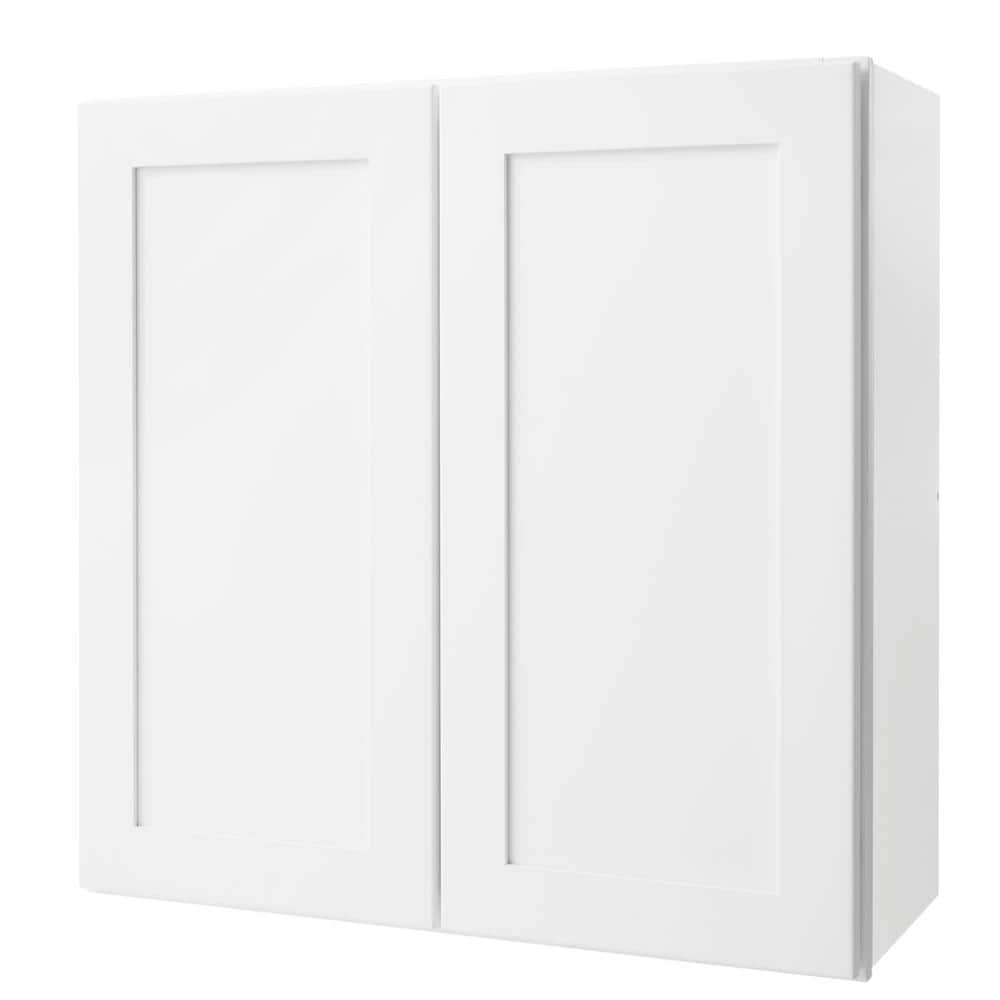Hampton Bay Avondale Shaker Alpine White Ready to Assemble Plywood 30 in Wall Kitchen Cabinet (30 in W x 30 in H x 12 in D)
Quick assemble technology, up to 1.5x faster than competition. Plywood construction, adds durability and dimensional strength. Features a premium painted finish & soft close doors.
Update your kitchen with this Hampton Bay Avondale Shaker Quick Assemble wall cabinet. Quick Assemble technology allows for up to 1.5x faster assembly than the leading competition. Plywood construction gives these cabinets extra strength and the flat packaging allows for easy transport. These framed shaker cabinets are painted in a crisp alpine white finish, adding a touch of tradition to your kitchen setup. Two thick, adjustable shelves let you customize the cabinet interior with plenty of room for storage, and soft-close doors shut easily and smoothly without slamming.
- Wall kitchen cabinet measures 30 in. H x 30 in. W x 12 in. D
- Quick Assemble RTA technology makes your kitchen assembly up to 1.5x faster than leading competition
- Plywood construction adds strength and durability, while reducing weight for easier install
- Flat-packed packaging with all hardware and instructions included for easier handling, transportation, and storage
- Soft close doors with 6-way adjustable hinges for easy alignment
- Modern, Shaker style doors
- Premium painted finish in Alpine White, leaving cabinets with a durable, easy to clean surface
- Two 3/4 in. thick adjustable plywood shelves for customiziation
Additional information
| Dimensions | H 30 in, W 30 in, D 12 in |
|---|---|
| Interior Cabinet Depth (in.) | 10.75 |
| Shelf Thickness (in.) | 0.75 |
| Manufacturer Warranty | Lifetime limited warranty |






by John
Everything meets expectations
by Nancy
Very well made and easy to assemble.
by Thomas
Easy to put together and looks nice.
by Chris
Very easy to put together and excellent craftmanship.
by Casiano
Cabinet ,,well constructed, but the doors are made of plastic
by Marc
Easy assembly and great looking.